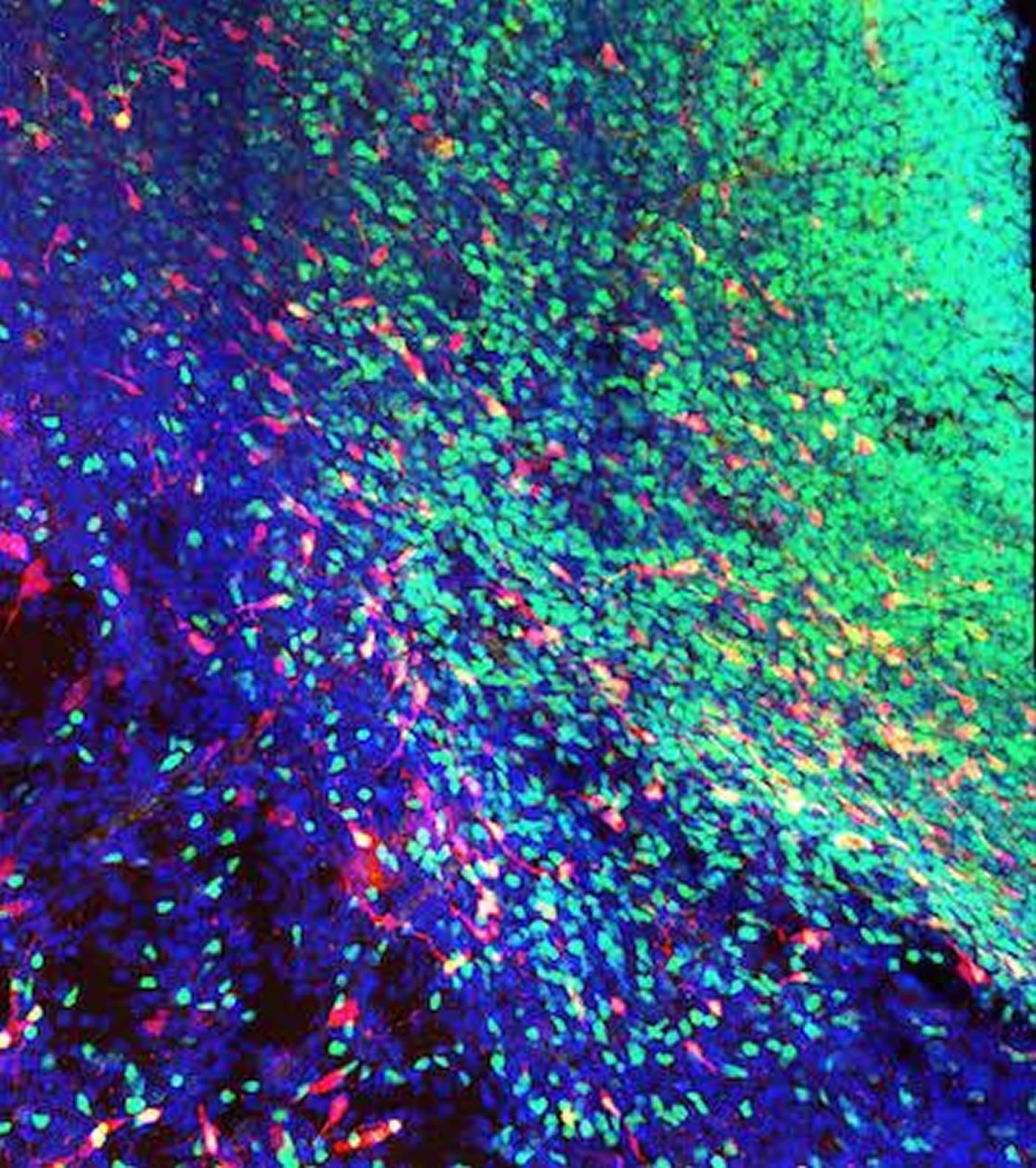Researchers from the MRC Centre for Developmental Neurobiology (MRC CDN) at King´s College London, led by Prof. Oscar Marín, have identified the mechanisms guiding interneurons to the striatum, a major brain centre involved in the coordination of body movement and motivation. These results, published in Journal of Neuroscience in collaboration with investigators from the Instituto de Neurociencias in Alicante (Spain), also reveal the molecule nature of the cues regulating the migration of striatal interneurons.
During development, the medial ganglionic eminence (MGE), a transitory brain structure, produces several populations of GABAergic inhibitory neurons, including cortical and striatal interneurons. While most research studies have focused on the migration of interneurons to the cortex, very little is known about the mechanisms through which interneurons colonise the striatum. Both cortical and striatal interneurons can be attracted by Nrg1 sources present in the cerebral cortex and the striatum. Therefore, the segregation of these two populations of interneurons must depend on repulsive signals that prevent the colonization of regions outside their final target.

Experiments carried out by the group of Prof. Marín demonstrated that striatal interneurons are repelled by the cerebral cortex through a mechanism that involves Eph/ephrins signalling. This new study also showed that responsiveness of MGE-derived striatal interneurons to attractive and repulsive cues is at least in part controlled by the postmitotic activity of the transcription factor Nkx2-1. These results reveal parallel mechanisms of target chemoattraction and off-target chemorepulsion for the migration of interneurons to the cortex and striatum.
About this neuroscience research
Funding: This work was supported by grants from the Spanish Ministry of Economy SAF2011- 28845 and CONSOLIDER CSD2007-00023.
Source: Andreia Carvalho – Kings College London
Image Credit: The image is credited to Verona Villar-Cerviño, PhD Instituto de Neurociencias (CSIC-UMH)
Original Research: Abstract for “Molecular Mechanisms Controlling the Migration of Striatal Interneurons” by Verona Villar-Cerviño, Caroline Kappeler, Sandrina Nóbrega-Pereira, Mark Henkemeyer, Luciano Rago, M. Angela Nieto, and Oscar Marín in Journal of Neuroscience. Published online June 10 2015 doi:10.1523/JNEUROSCI.4317-14.2015
Abstract
Molecular Mechanisms Controlling the Migration of Striatal Interneurons
In the developing telencephalon, the medial ganglionic eminence (MGE) generates many cortical and virtually all striatal interneurons. While the molecular mechanisms controlling the migration of interneurons to the cortex have been extensively studied, very little is known about the nature of the signals that guide interneurons to the striatum. Here we report that the allocation of MGE-derived interneurons in the developing striatum of the mouse relies on a combination of chemoattractive and chemorepulsive activities. Specifically, interneurons migrate toward the striatum in response to Nrg1/ErbB4 chemoattraction, and avoid migrating into the adjacent cortical territories by a repulsive activity mediated by EphB/ephrinB signaling. Our results also suggest that the responsiveness of MGE-derived striatal interneurons to these cues is at least in part controlled by the postmitotic activity of the transcription factor Nkx2-1. This study therefore reveals parallel mechanisms for the migration of MGE-derived interneurons to the striatum and the cerebral cortex.
“Molecular Mechanisms Controlling the Migration of Striatal Interneurons” by Verona Villar-Cerviño, Caroline Kappeler, Sandrina Nóbrega-Pereira, Mark Henkemeyer, Luciano Rago, M. Angela Nieto, and Oscar Marín in Journal of Neuroscience. Published online June 10 2015 doi:10.1523/JNEUROSCI.4317-14.2015






